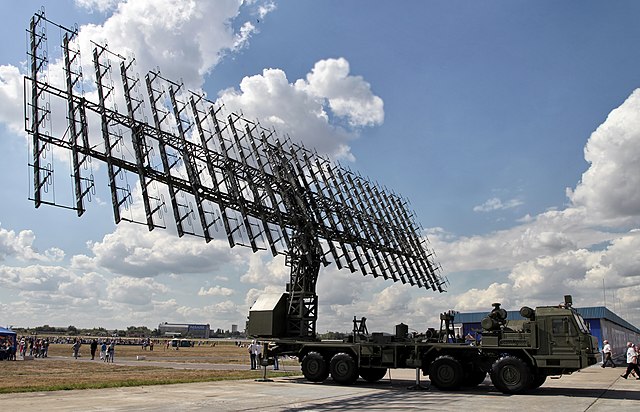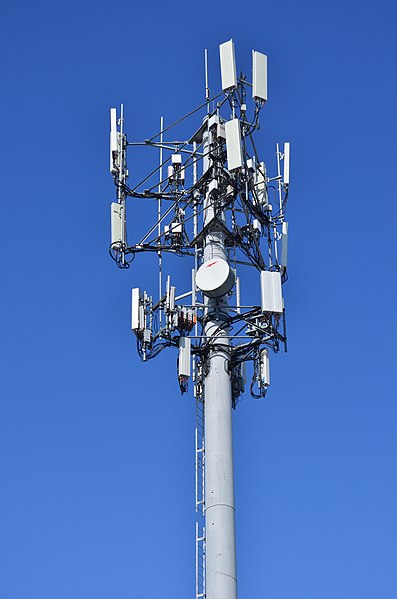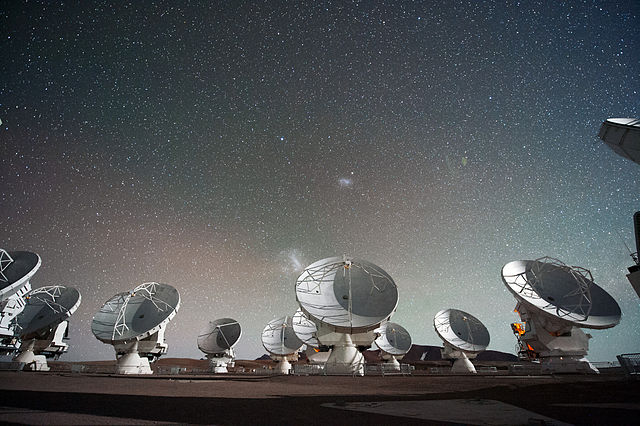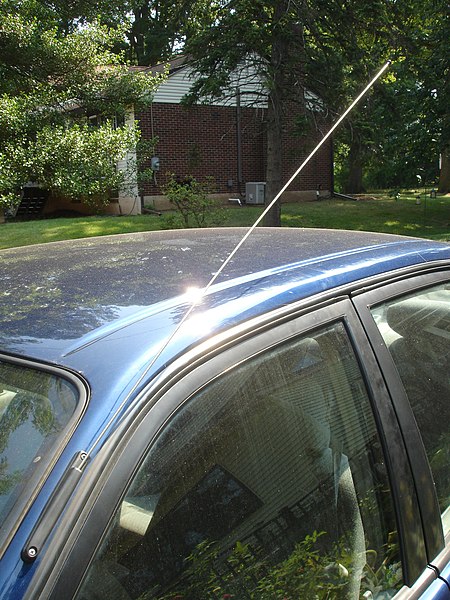An antenna array is a set of multiple connected antennas which work together as a single antenna, to transmit or receive radio waves. The individual antennas are usually connected to a single receiver or transmitter by feedlines that feed the power to the elements in a specific phase relationship. The radio waves radiated by each individual antenna combine and superpose, adding together to enhance the power radiated in desired directions, and cancelling to reduce the power radiated in other directions. Similarly, when used for receiving, the separate radio frequency currents from the individual antennas combine in the receiver with the correct phase relationship to enhance signals received from the desired directions and cancel signals from undesired directions. More sophisticated array antennas may have multiple transmitter or receiver modules, each connected to a separate antenna element or group of elements.
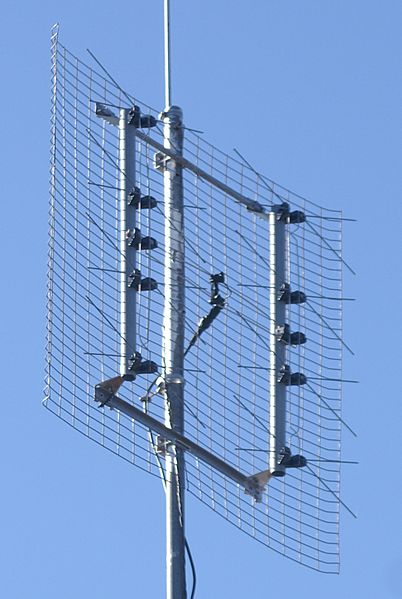
A common type of array antenna, a reflective array UHF television antenna. This example consists of eight dipole driven elements mounted in front of a wire screen reflector. The X-shaped dipoles give it a wide bandwidth to cover both the VHF (174–216 MHz) and UHF (470–700 MHz) TV bands. It has a gain of 5 dB VHF and 12 dB UHF and an 18 dB front-to-back ratio.
Large planar array antenna of a VHF Russian mobile air defense radar, the Nebo-M. It consists of 175 folded dipole antennas. An early phased array, the antenna radiated a vertical fan-shaped beam which could be swept horizontally across the airspace in front of the antenna.
Sector antennas (white bars) on cell phone tower. Collinear dipole arrays, radiating a flat, fan-shaped beam.
108 MHz reflective array antenna of an SCR-270 radar used during World War II consists of 32 half-wave dipole antennas in front of a reflecting screen.
In radio engineering, an antenna or aerial is the interface between radio waves propagating through space and electric currents moving in metal conductors, used with a transmitter or receiver. In transmission, a radio transmitter supplies an electric current to the antenna's terminals, and the antenna radiates the energy from the current as electromagnetic waves. In reception, an antenna intercepts some of the power of a radio wave in order to produce an electric current at its terminals, that is applied to a receiver to be amplified. Antennas are essential components of all radio equipment.
Multiple patch (rectangular) antennas found atop a Cellular Tower
Antennas of the Atacama Large Millimeter/submillimeter Array
An automobile's whip antenna, a common example of an omnidirectional antenna
Half-wave dipole antenna


